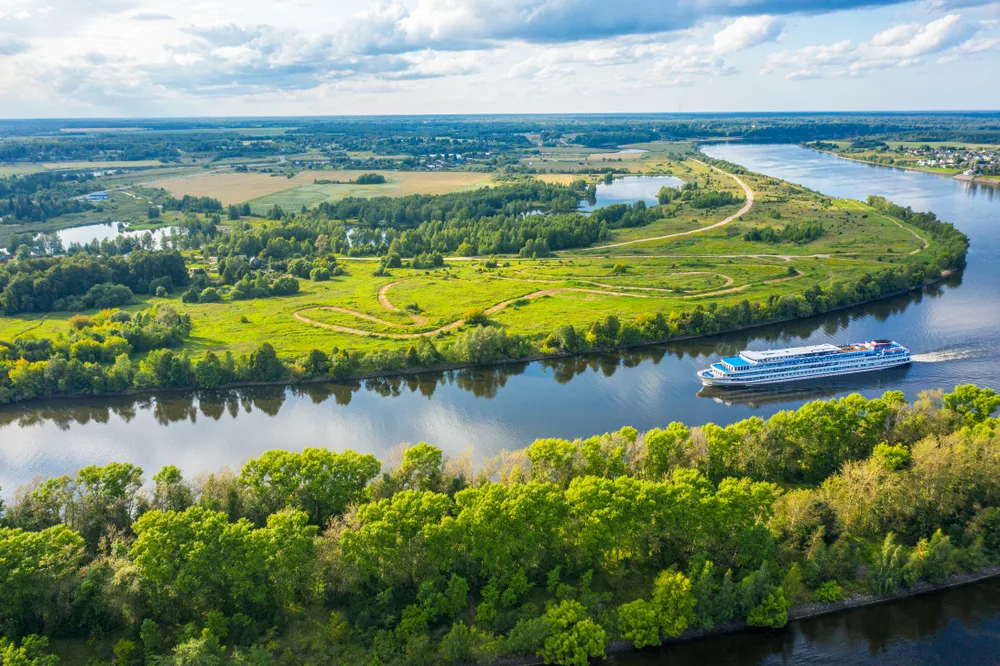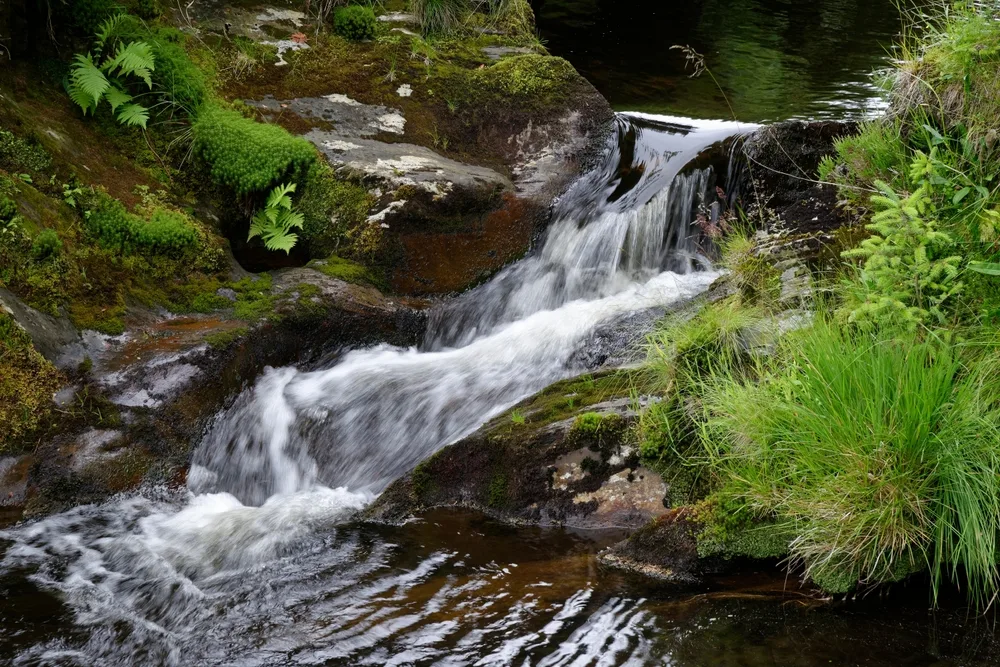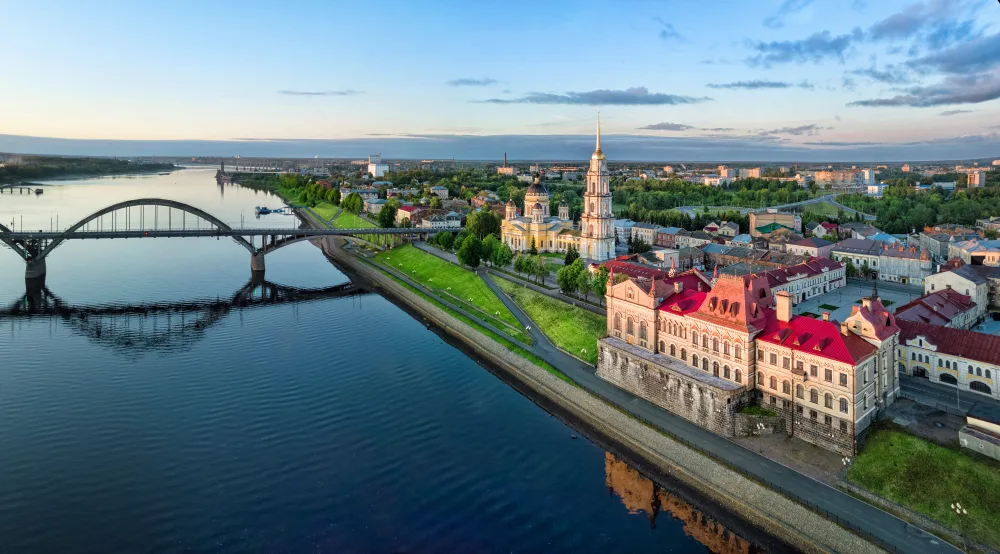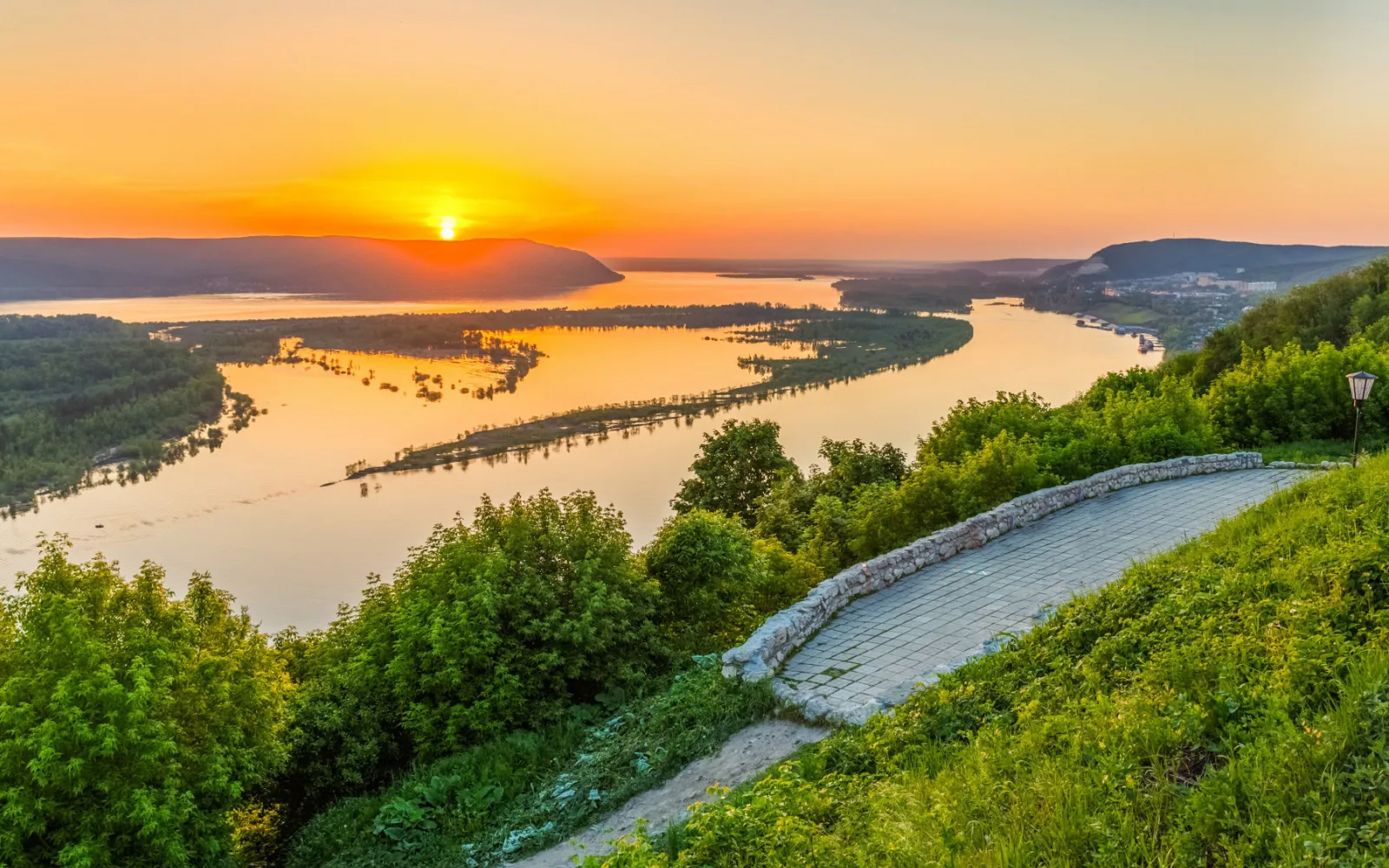Raise your hand if you love a good atlas fact! I assume you’re raising your hand. Well, good news… we’re here to talk about the longest river in Europe, so whip out your Cool Facts notebook and get ready for the whats, wheres, and more!
What’s the Longest River in Europe?

Igor Klyakhin/Shutterstock
The longest river in Europe is the Volga. It clocks in at 3,645 kilometers or 2,266 miles, winding its way down the European side of Russia (the bulk of Russia is on the other side of the Ural Mountains and sits in Asia).
Keep in mind that Europe is a small continent, so it won’t surprise you to learn that it is not among the top 10 longest rivers in the world.
It barely cracks the top 20, landing at No. 18 behind such famously abundant river systems as the Nile, the Amazon, the Yangtze, and the Mississippi.
It is followed in Europe by the:
- Danube, which flows through Germany, Austria, Slovakia, Hungary, Croatia, Serbia, Bulgaria, Romania, Moldova, and Ukraine before emptying into the Black Sea
- Ural, passing through Russia and Kazakhstan and also emptying into the Caspian Sea
- Dnieper (variant Dnipro), which originates in Russia and flows through Belarus and Ukraine before also ending up in the Black Sea
The Volga remains the most impressive, however. Its 2,266 square miles come in well ahead of the other three, which respectively are 1,771, 1,509, and 1,368 miles.
A River By Any Other Name…
The etymology of the Volga is also interesting. The origin of its “hydronym” – a word meaning the name of a body of water – is in question. Some theories put forward that it is a Finnish word that means “light.”
As Russia does border Finland to the north, this isn’t the craziest theory. However, as the mouth of the Volga is a good 1,200 miles or so from Finland, this seems questionable.
Another more popular theory is that “Volga” is related to the word “moisture” or “wetness” in a pre-Slavic language.
This is a common linguistic practice, and cognates are preserved in many of today’s Slavic languages, including Czech, Serbo-Croatian, Polish, and Bulgarian, among others. No doubt you’re now curious where exactly you’ll find the Volga River on your travels.
Let’s take a look.
Where Exactly Is the Volga?
As discussed, the Volga is in Russia and lies along its Western side, sitting on the European continent. It originates in Northwestern Russia, then flows to the bottom of the country, where it empties into the Caspian Sea.
This landlocked body of water is surrounded by Kazakhstan, Turkmenistan, Iran, and Azerbaijan as well as Russia.
Despite this, the Volga River doesn’t pass through any other country on its way to the Caspian, which is a powerful testament to the grand size of the country. The Volga has a catchment area of 533,000 square miles – an impressive 1,380,000 square kilometers.
This means the land from which it collects rainwater and funnels it to the sea. If you take the entire river system into account, says Encyclopedia Brittanica, the numbers get fairly staggering:
“In the process the Volga receives the water of some 200 tributaries, the majority of which join the river on its left bank.
Its river system, comprising 151,000 rivers and permanent and intermittent streams, has a total length of about 357,000 miles.” The river isn’t just large, however… it’s also important.
On its journey to the Caspian, it passes 11 of the 20 biggest cities in Russia – namely, Yaroslavl, Kostroma, Nizhny Novgorod, Cheboksary, Kazan, Ulyanovsk, Tolyatti, Samara, Saratov, Volgograd, and Astrakhan. Small towns and villages also lie along its banks.
Its importance to Russia is illuminated by how many settlements lie along its banks. In many ways, the Volga is the cradle of Russian civilization.
Humble Beginnings

Martin Fowler/Shutterstock
One of the most fascinating things about rivers is how mighty they can become from humble beginnings. For instance, says Brittanica, “The Volga is a small stream in its upper course through the Valdai Hills, becoming a true river only after the entrance of several of its tributaries.”
After that, it continues to grow as it “passes through a chain of small lakes, receives the waters of the Selizharovka River, and then flows southeast through a terraced trench.”
By the time it reaches the sea, it has amassed a truly staggering volume of water. Look no further than the fact that 80% of the Caspian Sea comes from the Volga, or the fact that the river discharges 284,600 cubic feet per second.
That means if you had 284,000 1-foot-square boxes, the Volga could toss them all into the sea every second. Please join me in saying, Dang, Volga!
Facts About the Volga
More facts, you say? Certainly.
- Width: While the width of a river is hard to determine, as it widens and narrows many times, the Volga ranges between 520 yards and 2 miles
- Source: The source of the Volga is the Valdai Hills northwest of Moscow. However, this is just where it begins, as it also catches until cubic feet of water from its catchment area before emptying into the Caspian Sea
- Highest Point: 748 feet or 228 meters above sea level at the source in the Valdai Hills
- Lowest Point: 92 feet below sea level at the mouth of the Caspian Sea
Also impressive is the fact that the Kuybyshev Reservoir lies along the Middle Volga. It is the largest reservoir in Europe and the third largest in the world, a stunning sight from the photos.
(Seriously, highly recommend a quick Google image search.) The reservoir is half the size of Connecticut. Additionally, the Volga Delta is the largest in Europe.
“Over the past century, the Volga Delta has grown from 3,222 square kilometers (1,244 square miles) in 1880 to 27,224 square kilometers (10,511 square miles) today,” says NASA. “This significant growth is due both to sea level changes in the Caspian and the broad, gentle slope of the delta.”
Frequently Asked Questions

Sergey Dzyuba/Shutterstock
Here are some TL;DRs and frequently asked questions about the Volga River:
Where is the Volga?
The Volga River lies entirely within the state of Russia, in the western portion that sits on the European continent.
How long is the Volga River?
The Volga is 3,645 kilometers or 2,266 miles long.
Which cities does the Volga pass?
The Volga River passes the major cities of Yaroslavl, Kostroma, Nizhny Novgorod, Cheboksary, Kazan, Ulyanovsk, Tolyatti, Samara, Saratov, Volgograd, and Astrakhan on its way to the Caspian Sea.
What other rivers in Europe are known for their length?
After the Volga, the longest rivers in Europe are the Danube, the Ural, the Dnieper, and the Don.
Is Russia safe for Americans right now?
Sadly, Russia is no longer a welcoming place for American tourists.
According to the US Department of State, “Do not travel to Russia due to the unpredictable consequences of the unprovoked full-scale invasion of Ukraine by Russian military forces, the potential for harassment and the singling out of U.S. citizens for detention by Russian government security officials, the arbitrary enforcement of local law, limited flights into and out of Russia, the Embassy’s limited ability to assist U.S. citizens in Russia, and the possibility of terrorism. U.S. citizens residing or travelling in Russia should depart immediately.”
Even if you already have plans to travel to the area, you should put them on hold until a more propitious time. Note that American citizens who have family in Russia are still at risk due to their nationality, and should consider rescheduling their trips as well.
Volga Ho!
Now that you know everything there is to know about the Volga, you’re well prepared to make a stop there if/when Russia becomes a safe travel destination. Happy travels!



